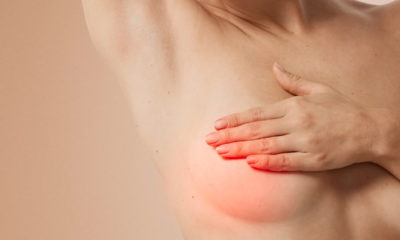While liposuction is a great method for removing large amounts of unwanted fat, if you are after a more toned and athletic appearance as well, you may be a better candidate for liposculpture.
According to board certified plastic surgeon Dr. Mark D. Epstein, the difference between liposuction and liposculpture comes down to artistry and planning. He no longer approaches fat removal as a procedure to “de-bulk” the body. Instead, he approaches each patient as a work of art and carefully plans the fat removal to reveal the natural beauty of the form beneath the fat.
Liposuction
With traditional liposuction, a plastic surgeon highlights or outlines areas where excess fat lives and removes the fat during surgery through a small tube called a cannula. During early liposuction procedures, fat was often removed in large quantities, but with very little regard for the form of the muscles and bones beneath the fat. As a result, contour deformities or small irregularities in the surface were not uncommon after a liposuction procedure.
Liposculpture
Think of the difference this way. Let’s say there is a white wall. If the wall needs to be painted blue, any painter could do the job. If the wall is to have a beautiful mural painted across it, a skilled and inventive artist will be needed. The same idea applies when it comes to the canvas that is the human body, and what differentiates liposuction from liposculpture.
“Liposculpture is more of a comprehensive planning of what you want that part of the body to look like, along with the related adjoining areas, and taking into account the underlying anatomy: the muscles, and bones and structure of the body,” explains Epstein. “This requires an intimate knowledge of what the ideal appearance anatomically is. Then, when you remove excess fat in differing amounts, you are essentially unveiling the anatomy underneath.”
Anatomy for the (Surgeon) Artist
Plastic surgery is an incredibly artistic surgical field. The ability to be thoughtful, creative, and inventive are in many cases what’s required to achieve the best of results. Dr. Epstein shares that his favorite reference book when planning a surgery is not a medical book at all, but a photographic essay on the human form.
The book, compiled by artist Sarah Simblet, was part of an assigned reading list for an art class his daughter took. As he glanced through the images in the book, he immediately recognized that its value extended beyond art class to the OR.
“The book uses young adult models, male and female, who are all fairly well defined,” Epstein shares. “They show you the beauty of the human form, and all the anatomy that lies underneath, in all of us. This helps me understand and appreciate the relationships between the muscles and the bones and overall shape and contour of the body. It is essential in helping me plan my surgeries and improve them. I continually refer to this, because if you don’t understand the natural anatomy of the body as it exists, you can’t bring it out in the operating room.”
Layers: Everyone Has Them
Whether you have a lot of fat or just a little, it is divided into layers between the skin and your muscles. Traditional liposuction did not distinguish between these three layers. Instead, early liposuction procedures focused on removing fat in bulk.
The Three Layers of Fat:
- Superficial
- Intermediate
- Deep
Over time, more precise tools and smaller cannulas have been developed. These new tools provide surgeons with the means to target fat within the three individual layers. Experienced surgeons works within these layers, sculpting a three dimensional form to complement the anatomy beneath the fat.
Liposculpture for a Defined Six Pack
Epstein defines each patient’s anatomy by carefully planning the amount of fat that will be left behind to provide the most attractive contour. By leaving behind small amounts of fat just above the abdominal muscles, he can provide the illusion of additional muscle fullness and can even sculpt a six pack in the operating room.
“You want to leave different thicknesses of fat under the skin in different areas of the body,” he explains. “For instance on a male abdomen, on the flanks in front I’ll make the fat really thin, maybe half a centimeter. But on the central abdomen, over the muscles, I’ll leave a little bit more fat, perhaps a centimeter, and then etch into that centimeter some grooves to bring out the underlying muscle anatomy underneath, this way you can get a six pack.”
To accentuate the shape of certain parts of the body, Dr. Epstein will sometimes remove excess fat from one area and transfer it to another. For example, the biceps, deltoids and triceps often benefit from additional fat placement to improve contour.
Liposculpture is all about using subtle, carefully planned changes within different layers of fat in order to best accentuate the body’s underlying contours and beauty. With the right hands, it can achieve an incredible change when compared to traditional lipo only aimed at removing bulk fat.



















Facebook
Twitter
Instagram
YouTube
RSS